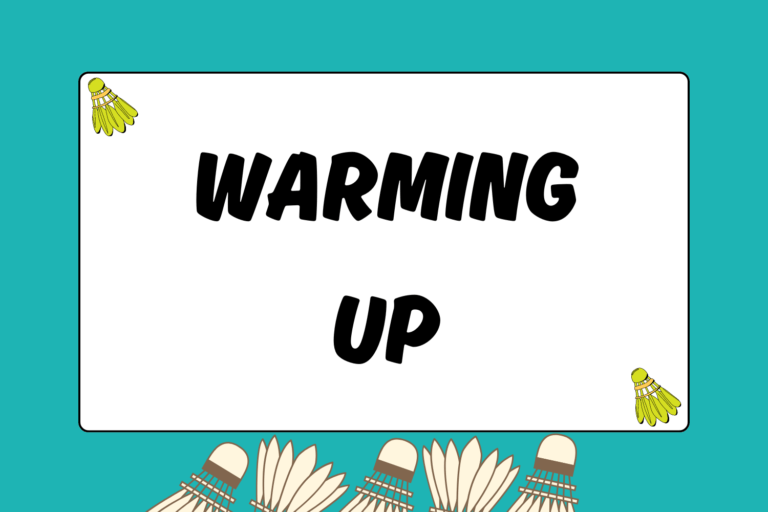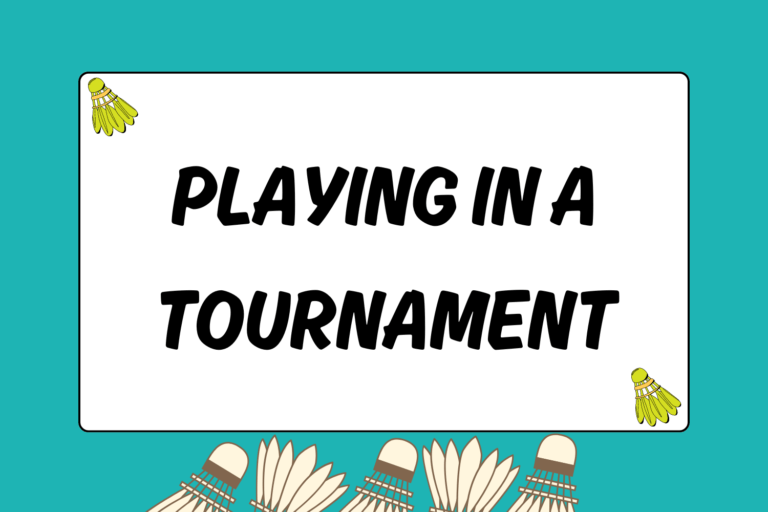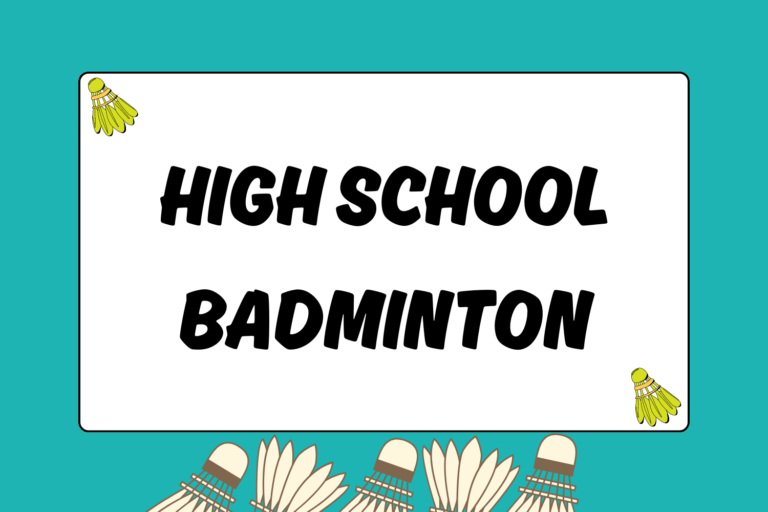If you want to consider yourself a “complete” badminton player, there are five basic shots you must know and master.
The serve, clear, drop, drive, and smash are all essential components to becoming a great player. In this guide, you’ll learn the purpose of each shot and how they fit into the game.
The Serve
This is the first shot you should learn because it is easily the most important one.
The quality of your serve will largely determine how the rest of the rally plays out. If you hit a poor serve, your opponent can end the rally immediately with a strong smash or well-placed drop.
First and foremost, your goal is to create an opportunity for yourself or your team to end the rally. If your serve does not accomplish that, it should at least deny your opponent an opportunity to end the rally.
Following these principles should force you to aim the serve either low and short or high and deep. Hitting to either of these extremes will make it difficult for your opponent to hit a quality shot in return. To recap, here are some of the main characteristics:
- The serve is the most important shot in the game.
- The serve can dictate how a rally will play out, favorably or unfavorably.
- A serve should be aimed low and short or high and deep.
The Clear
After the serve, the clear is the second most fundamental shot in badminton. Regardless of your playing style or preferred event, the clear shot will be an integral part of your game.
It’s easy to undervalue a clear shot because it isn’t flashy and doesn’t often lead to a point. To grasp its worth, you need to understand what a clear shot aims to accomplish. On an elementary level, the variations of a clear shot can accomplish one of two things:
- A deep, high-arching clear can buy you time to recover for the next shot.
- A deep, flat clear can put your opponent in a difficult position to return the shot.
In a sense, a clear can either be a defensive or offensive tactic.
When you’re struggling to get in position to return a shot, a clear can be a great way to regain your balance and prepare for the next shot. Conversely, you can also use it when you’re in a great position to put your opponent off-balance and make them work harder. It’s a more subtle offensive strategy, but stamina plays a bigger and bigger role as the game progresses.
Hot Tip: Focus on Your Practices
When learning the basic shots of badminton, it’s important to set a manageable learning curve for yourself. Overwhelming yourself with all the strokes at once can set you back.
Make sure you are comfortable with each shot before progressing to a more challenging one. A simple way to gauge your readiness is to just rally with a partner using only that one shot. If you can manage to get some solid rallies going, you should be prepared to move on.
The Drop
At its most basic level, a drop shot is any shot that lands between the net and the short service line. A drop can be taken from the baseline or at the net. In both instances, the drop is pushing the shuttlecock down and directly forcing your opponent to hit it up.
Unfortunately, it does require more skill than simply placing the shuttlecock there. The landing spot is equally important as the shuttlecock’s trajectory. One without the other would immediately make it a poor drop shot. The speed of your shot will come naturally as you learn to aim the shuttlecock.
Here are some tips for hitting the drop shot:
- Aim the drop to land between the net and the short service line.
- Have the shuttlecock come off the racket flat to begin its descent.
- Deny your opponent an opportunity to score and simultaneously create one for yourself by having a well-placed drop.
Power does not automatically improve the quality of a drop shot. As such, any player with the desire and time commitment should be able to have a devastating drop.
The Drive
A drive is a quick, flat shot that usually has the racket in front of you at around shoulder height. It is an attacking shot intended to put pressure on the opponents by forcing them to react quickly and make a poor return.
The great thing about drives is the range of angles you can cover just by using the panhandle grip. By using just the panhandle grip you enable yourself to cover both the forehand and backhand side easily. It will require some practice, but not having to change grips will save you valuable time in reacting to return a shot. Some defining qualities of a drive are:
- It’s a fast, flat shot that should pass low over the net.
- It relies on the wrist for power.
- It’s purely an offensive shot designed to pressure your opponents.
The Smash
Just like big serves in tennis or spikes in volleyball, smashes are the crowd-pleasers in badminton. A smash is an overhand stroke that draws power from your body rotation, shoulders, and wrist to create an explosive shot that gets to the floor in a hurry.
Although the smash is fairly easy to learn, it’s definitely one of the harder shots to master. To be effective, a smash must be hit with both power and precision. A smash that is well-placed but slow will give the opponent enough time to reach the shuttlecock. To the same effect, a powerful smash that heads straight for the opponent’s racket doesn’t require any time to reach the shuttlecock.
At its very core, a smash just wants to go home, and that home is the floor on your opponent’s side of the court. Here are a few tips to help achieve that goal:
- Position yourself a bit behind the shuttlecock as it falls so you can move into the shot and use your momentum to generate power.
- Contact the shuttlecock at the highest point you possibly can.
- Aim the smash away from your opponent.
- Keep it as close to the top of the net as possible.
Hot Tip: Manage Your Energy Level
Sure, hitting a good, hard smash to end a rally feels great. However, this shot will eventually take a toll on your body.
Manage your energy by straying from power plays and using finesse. Winning a rally with a drop requires less effort than with a smash and still scores you a point. Disregarding your energy levels will make your smashes less effective and more inconsistent as a match wears on.
Bringing it All Together
All of this information may be a lot to take in, so by no means should you go out and work on all of the shots at once. It’s important to set a challenging learning curve for yourself.
Start off with the more basic shots and work your way toward the more advanced ones. Check out the guides regarding each individual shot for more detailed instructions on how to practice them and incorporate them into your game.





